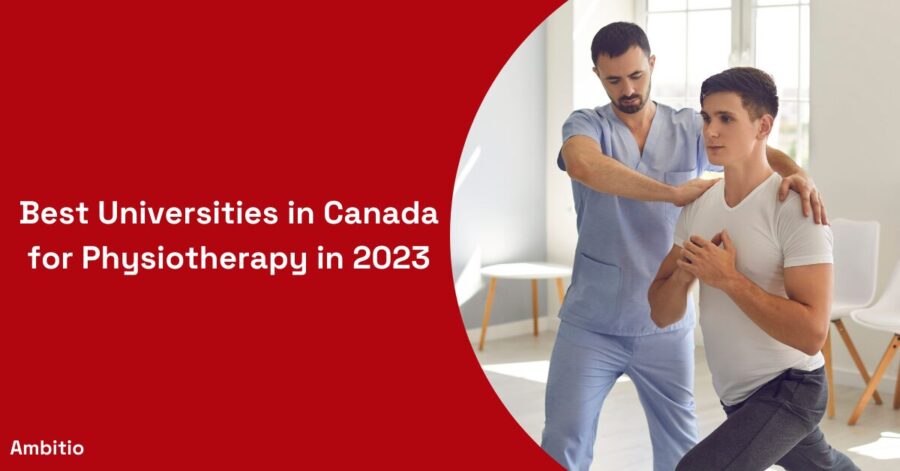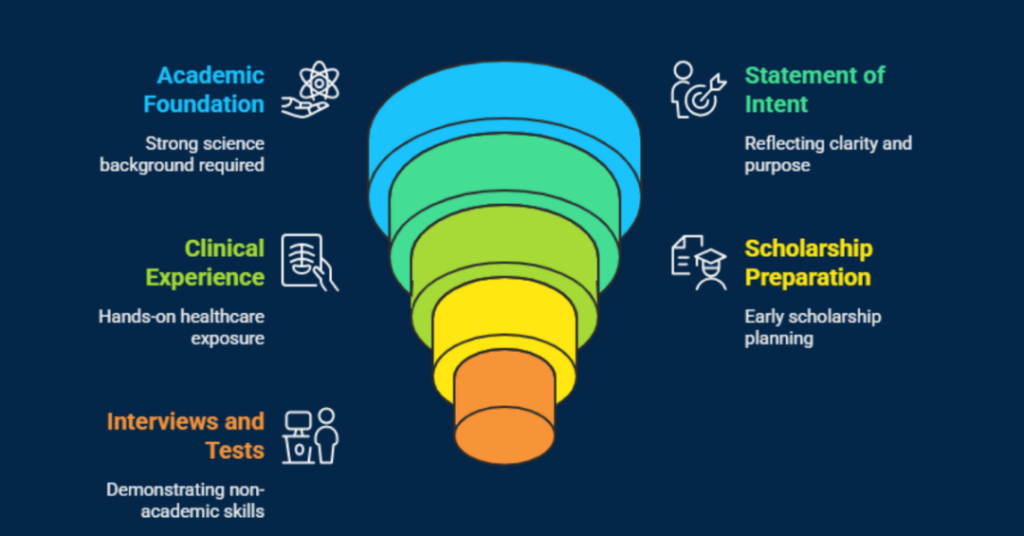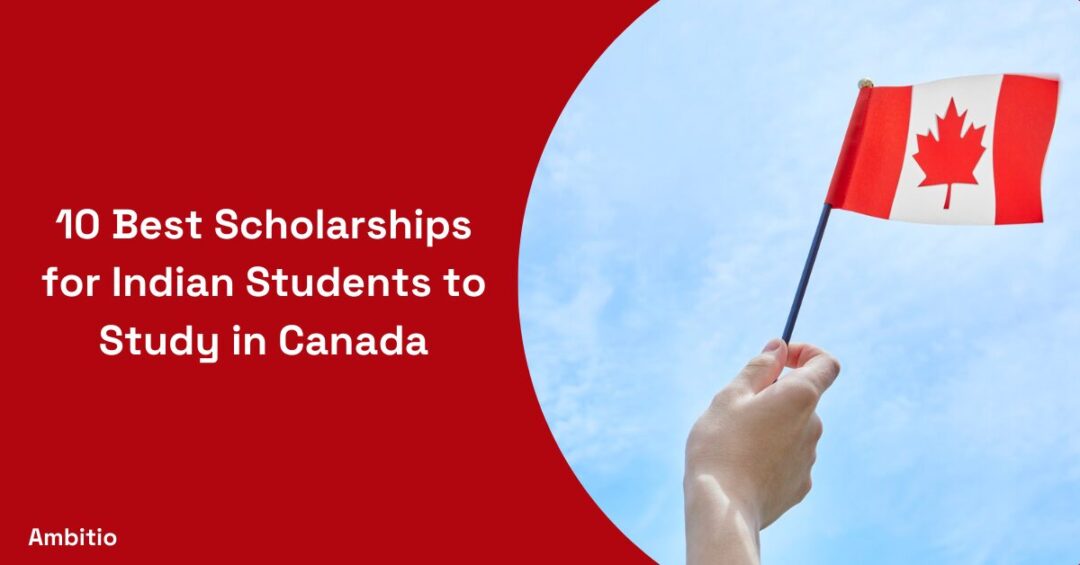15 September 2025
5 minutes read
10 Best Universities In Canada For Physiotherapy For Indian Students

Key Takeaways
- Choose the best universities in canada for physiotherapy to ensure proper accreditation, clinical placements, and eligibility for licensing.
- Build a strong academic base in science subjects and back it with relevant volunteer or clinical experience.
- Write a clear and personal statement of intent since generic applications usually get rejected.
Harsh (a student last year): You know what, I’ll just pick any physiotherapy program in Canada. As long as it says “Master of Science in Physical Therapy,” it should work, right?
Wrong. That’s the mistake hundreds of Indian students make every single year. Physiotherapy in Canada isn’t about picking any random program. Without the right university, proper clinical placements, and recognition from the Canadian Alliance of Physiotherapy Regulators, the degree won’t take you anywhere.
The universities that actually open doors, Toronto, Alberta, McGill, Dalhousie, and University of British Columbia, are the ones that matter. They don’t just give you a degree; they prepare you to become a licensed physiotherapist in Canada with placements and opportunities that count.
How To Get Admission In Best Universities In Canada?
Before we talk about the top universities, I wanted to tell you the odds. Every year, thousands of students apply to Canadian universities for top physiotherapy programs, but only a small percentage actually make it through.

The competition is brutal, not because students aren’t capable, but because they underestimate how selective schools like the University of Alberta or University of Toronto really are. Grades alone don’t guarantee admission. Canadian admissions teams look for depth, clarity of purpose, and proof that you’re ready for the clinical demands of physiotherapy. Missing even one of these factors can push your application into the rejection pile.
1. Strong Academic Foundation is Non-Negotiable
The best Canadian universities don’t just glance at your transcript. They analyze it. For top physiotherapy programs, most schools want a solid background in science—biology, anatomy, physiology, chemistry. If your undergraduate record shows gaps, it becomes very hard to compete against graduates who’ve consistently excelled in these subjects.
2. Statement of Intent is a Deal Maker
Many students treat their statement of intent as just another essay. Big mistake. For admissions committees at places like the University of Alberta, this document is often the deciding factor. It has to reflect clarity about why physiotherapy matters to you, how your background supports it, and what impact you want to make as a graduate in the Canadian healthcare system. Generic writing kills applications faster than low grades.
3. Clinical and Volunteer Experience Speaks Louder than Numbers
Top physiotherapy programs don’t want students who only know theory. They want future practitioners who’ve stepped into clinics, observed professionals, or volunteered in healthcare settings. Even short stints of hands-on exposure show that you understand what it means to work as a physiotherapist, and this gives you a serious edge.
4. Scholarships Demand Early Preparation
A lot of Indian students ignore scholarships, assuming they won’t qualify. The truth is, Canadian universities offer some very competitive scholarships for international students, but you need to prepare months in advance. Most of these opportunities are tied not just to grades but also to leadership, research work, or healthcare community service.
5. Interviews and Tests Can Tilt the Scale
Some universities hold interviews or additional assessments to evaluate non-academic skills like communication, empathy, and problem-solving. It’s here that many otherwise strong applicants fail. Top physiotherapy programs expect you to think like a professional, not just a student. Being able to handle situational questions confidently can push your application ahead of equally qualified graduates.
Top 10 Universities For Masters In Physiotherapy In Canada For Indian Students
Pheww… it took me 23 years to curate this list. Lol, just kidding. But, you can’t just “ChatGPT” your way into a decision about where to study. Can you? This list is built on real admission trends, program credibility, placements, and how each university actually helps you become a licensed physiotherapist in Canada.
So here we go:
| University | Approx Average Salary After Graduation* | Approx Tuition Fees (International Students) | Eligibility Criteria (Masters Level) |
|---|---|---|---|
| University of Toronto | CAD 75,000–90,000/yr | ~ CAD 10,550/yr for MSc in Physical Therapy | Bachelor’s degree in health sciences or related with strong GPA; English proficiency (IELTS/TOEFL); relevant prerequisites; clinical/volunteer experience |
| University of British Columbia | CAD 80,000–100,000/yr | ~ CAD 10,000–15,000/yr (program-dependent) | Bachelor’s degree in science-related fields; English (or French) proficiency; required prerequisites; healthcare/clinical exposure recommended |
| University of Alberta | CAD 60,000–90,000/yr | ~ CAD 10,990/yr for MSc in Physical Therapy | Bachelor’s degree with required prerequisites; good GPA; English proficiency; volunteer or research exposure preferred |
| McGill University | CAD 70,000–90,000/yr | ~ CAD 15,000–25,000/yr | Strong undergraduate degree in sciences; English/French proficiency; relevant coursework; clinical/volunteer experience; academic references |
| Western University | CAD 70,000–100,000/yr | ~ CAD 35,000–37,500 total program fees | Bachelor’s degree in health sciences or related; English proficiency; minimum GPA; letters of recommendation; clinical exposure |
| McMaster University | CAD 70,000–90,000/yr | ~ CAD 25,000–30,000/yr | Bachelor’s in science-related field; English proficiency; relevant prerequisites; volunteer/clinical exposure; strong academic record |
| Dalhousie University | CAD 65,000–85,000/yr | ~ CAD 10,000–15,000/yr | Bachelor’s degree with science prerequisites; good GPA; English proficiency; healthcare-related exposure preferred |
| University of Ottawa | CAD 70,000–90,000/yr | ~ CAD 15,000–20,000/yr | Bachelor’s degree; English/French proficiency; required coursework; volunteer/clinical experience strengthens profile |
| Queen’s University | CAD 75,000–95,000/yr | ~ CAD 15,000–30,000/yr | Bachelor’s degree with relevant prerequisites; English proficiency; high GPA; strong references; clinical/volunteer exposure |
| University of Saskatchewan / Manitoba | CAD 60,000–80,000/yr | ~ CAD 10,000–15,000/yr | Bachelor’s degree with required prerequisites; English proficiency; some programs may prioritize Canadian residents; healthcare exposure recommended |
Conclusion
For international students, tuition fees in top universities may look steep at first, but Canadian universities also offer scholarships and scholarship options tied to merit and research. These aren’t just physiotherapy courses, they’re gateways to promising career prospects. Once you’ve completed the accreditation and the physiotherapy competency examination (PCE), you’re licensed to practice and step into a system where demand for skilled physiotherapists is only rising.
It’s worth remembering that Canada is home to only 15 physical therapy programs, and every school of physical or rehabilitation science, whether it’s the University of Ottawa, McGill’s occupational therapy at McGill University, or Western’s school of rehabilitation science, has been designed with clinical skills, musculoskeletal expertise, and entry-level physical therapy readiness in mind.
To get into a top Canadian university, you need more than just good grades, you need a game plan. Ambitio’s AI-powered platform and expert consultants guide you through every step, from choosing the right university to securing study permits and work opportunities. No guesswork, no wasted time, just a clear, structured path to studying in Canada. If you’re ready to make studying in Canada a reality, Ambitio is your best bet.
FAQs
What are the admission requirements for physiotherapy programs in Canada?
Admission requirements typically include a bachelor’s degree, specific prerequisite courses, English language proficiency (IELTS or TOEFL), and, in some cases, relevant work experience.
Are scholarships available for international students pursuing physiotherapy in Canada?
Yes, many Canadian universities offer scholarships and financial aid to international students. The eligibility criteria and application process may vary, so it’s essential to research and apply accordingly
What are the job prospects for physiotherapists in Canada?
Canada’s healthcare sector is growing, and there is a high demand for physiotherapists. Graduates can find job opportunities in hospitals, rehabilitation centers, private clinics, and sports organizations.
How much does it cost to study physiotherapy in Canada?
Tuition fees for physiotherapy programs in Canada vary depending on the university and the level of study (undergraduate or graduate). Living expenses also vary by location, so it’s advisable to plan your budget accordingly.

You can study at top universities worldwide!
Get expert tips and tricks to get into top universities with a free expert session.
Book Your Free 30-Minute Session Now! Book a call now




























